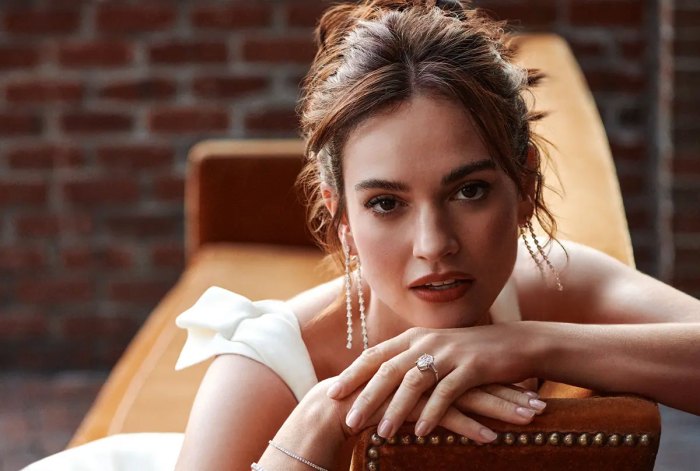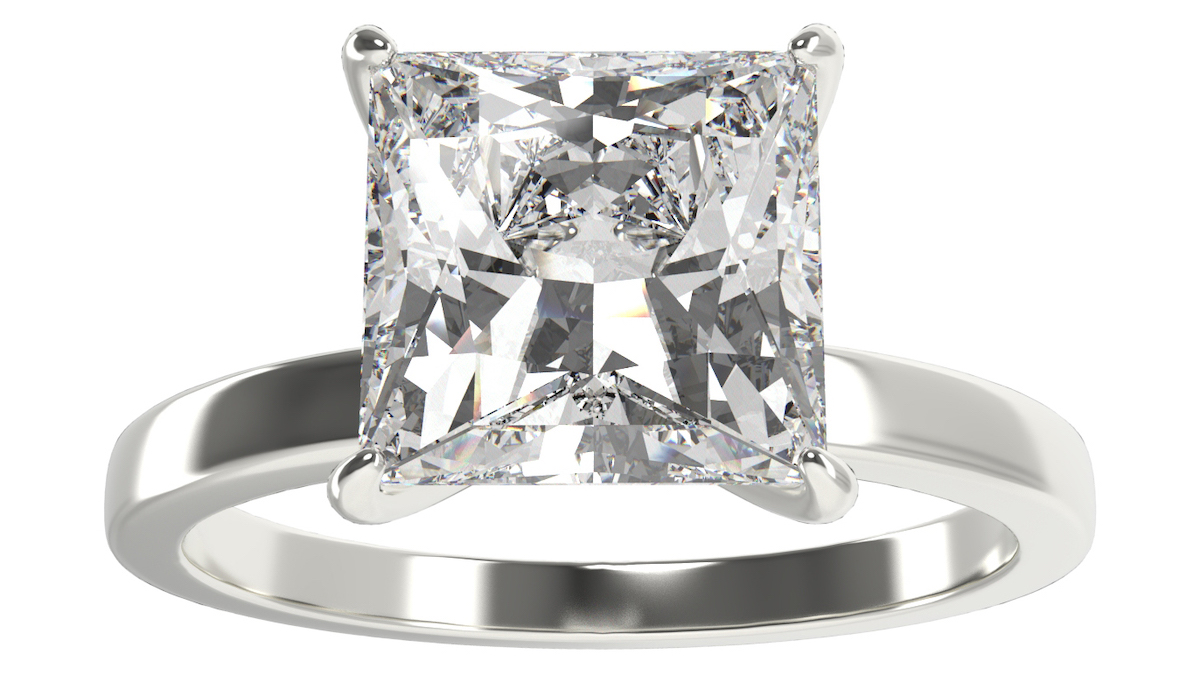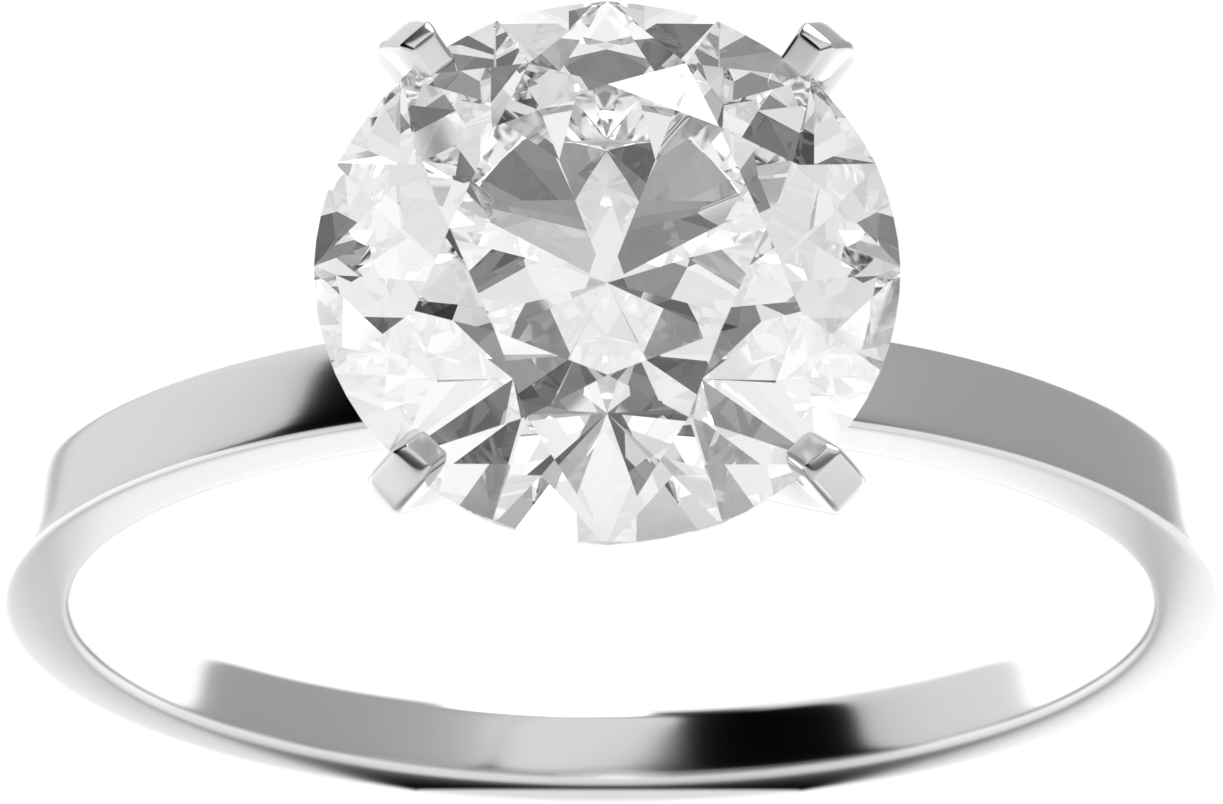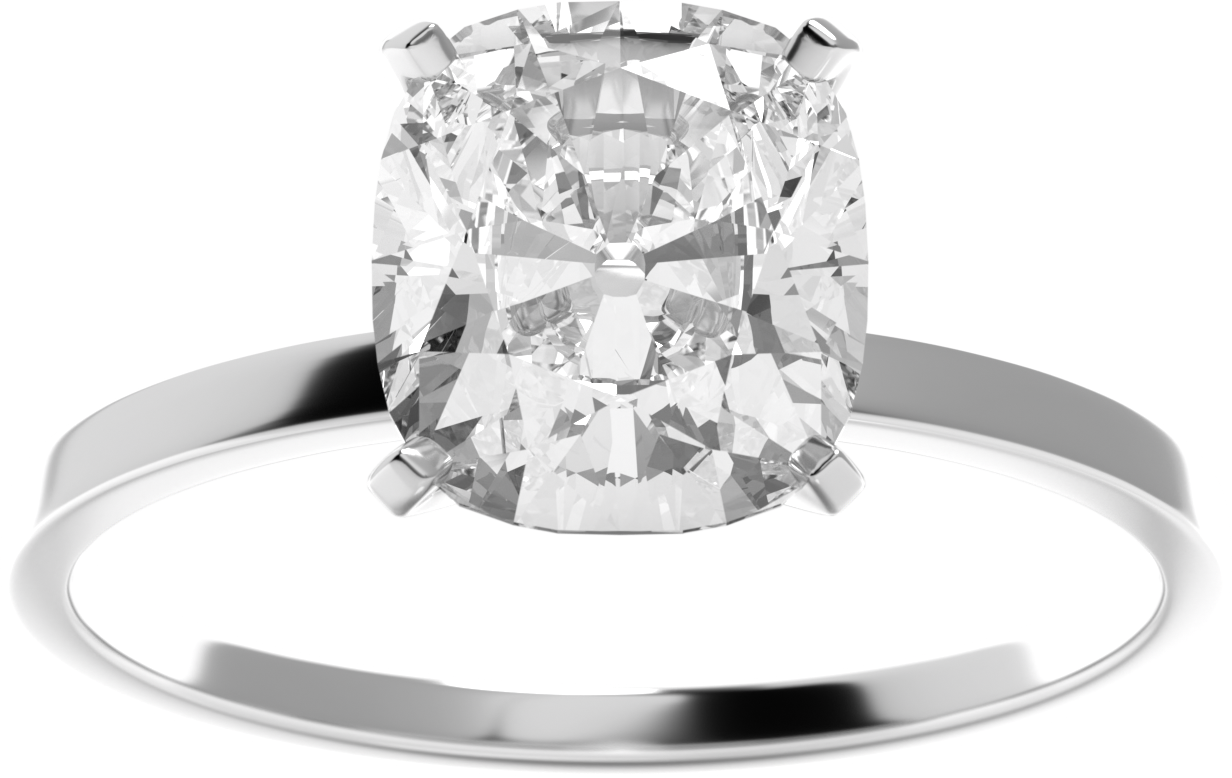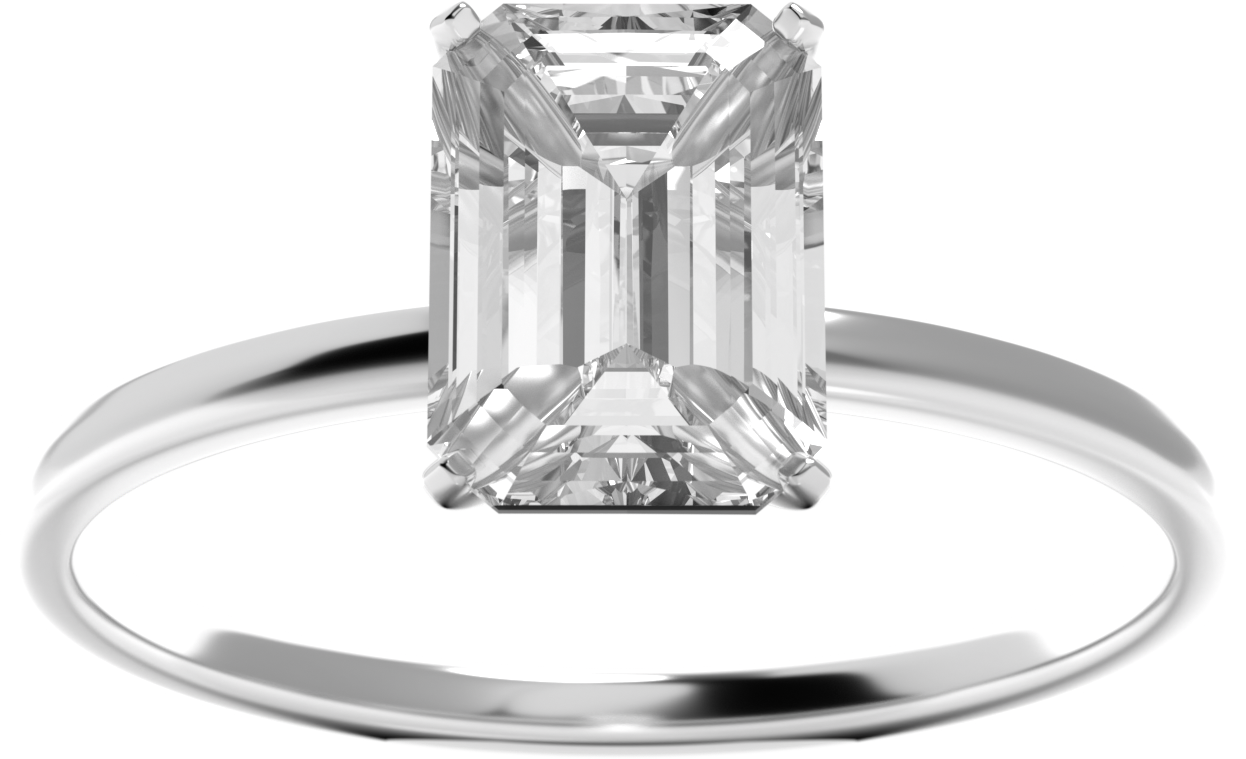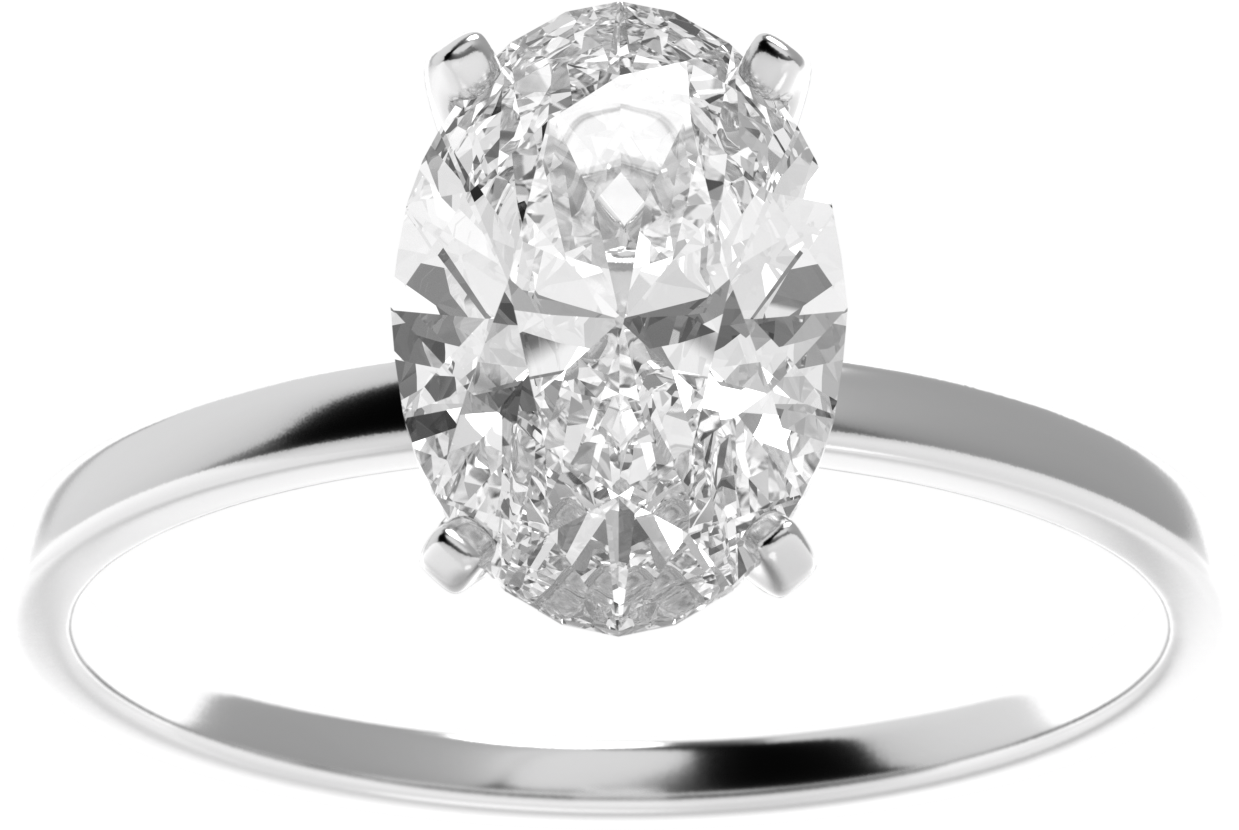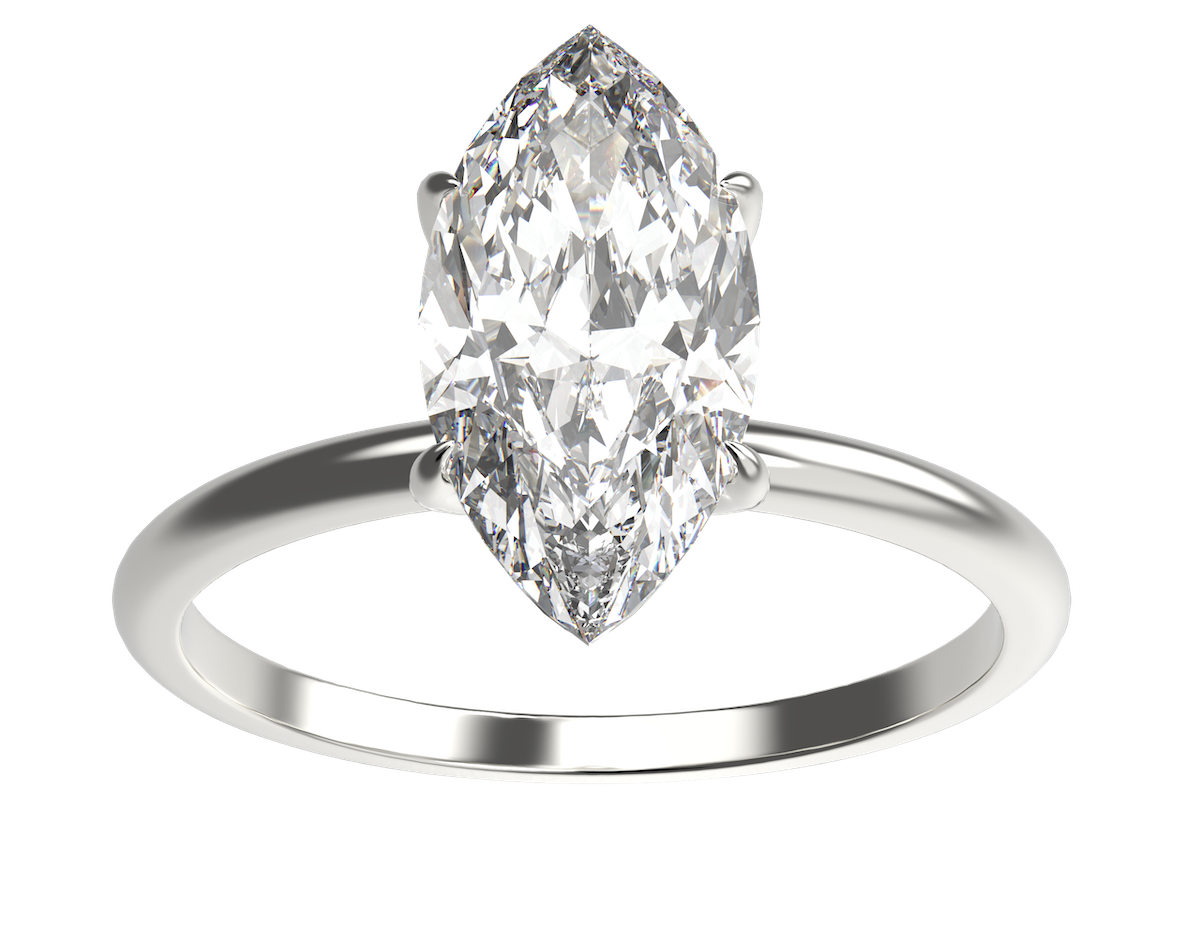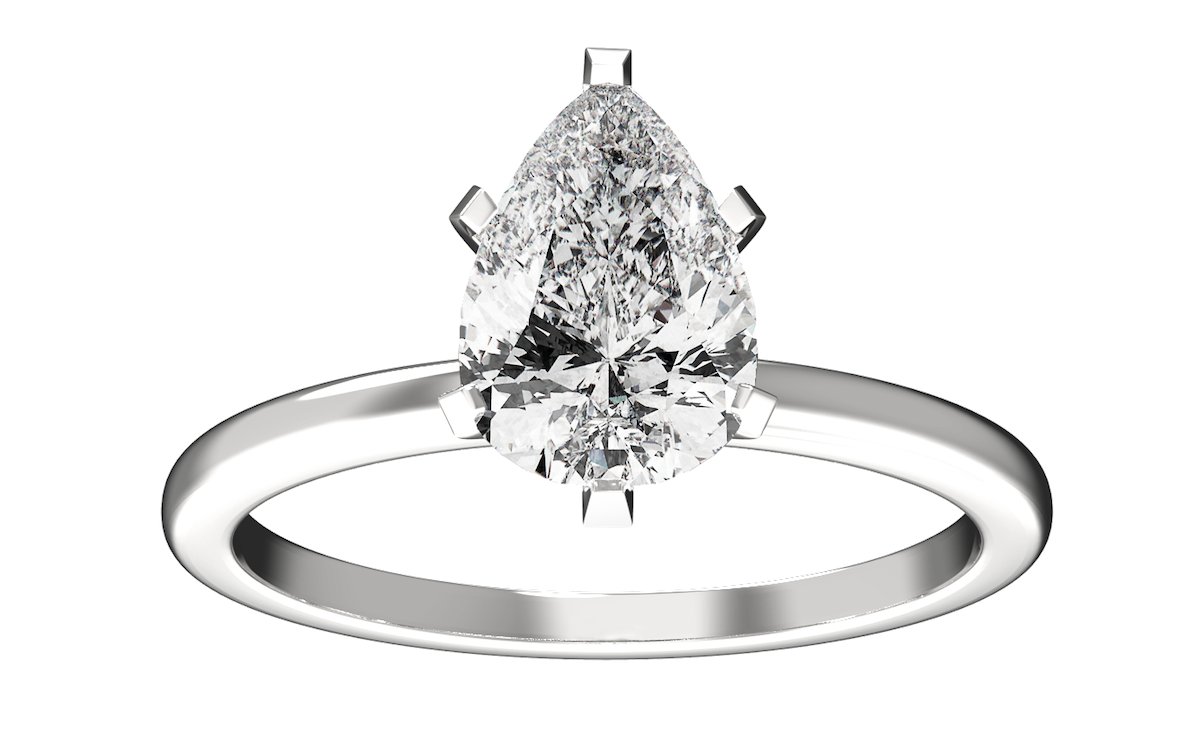Find the Perfect Size for Your Natural Diamond Engagement Ring
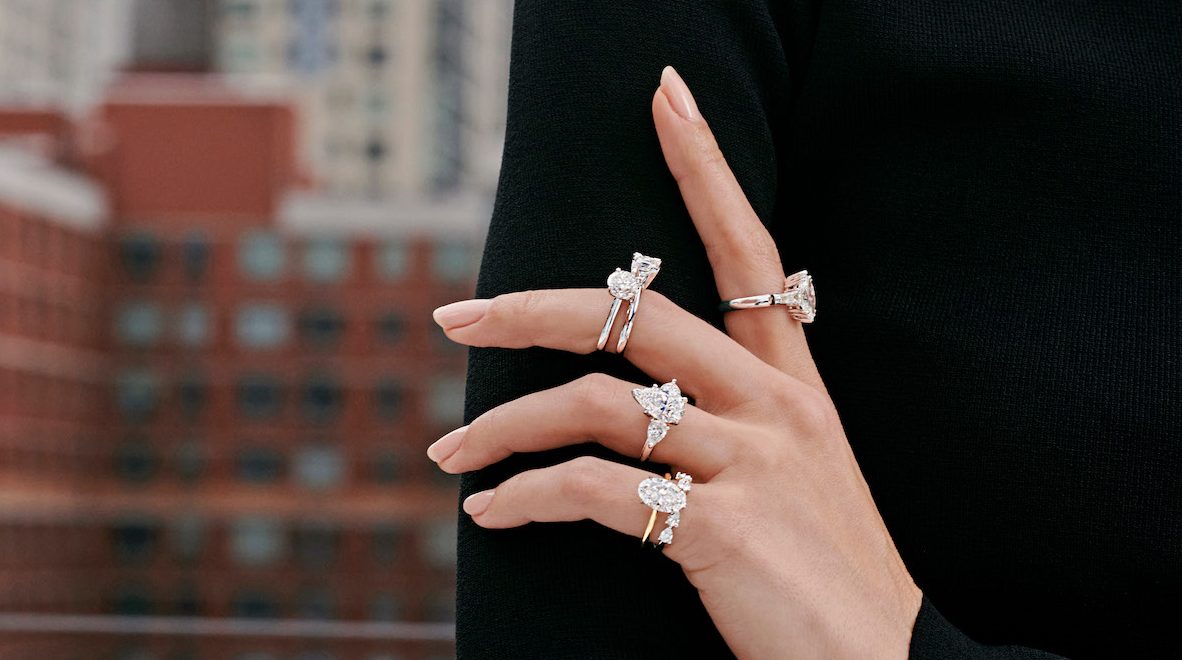
Many questions come up when searching for the perfect diamond engagement ring. How big does a 1-carat diamond look on my finger? How can I virtually try on an engagement ring without an app? What is a diamond carat? What carat-size diamond do I need? We have the answers. A carat is the measurement of the diamond’s weight, not its size. 1 carat is equal to 200 milligrams. Carat size charts will not show you how a diamond’s size really looks on your finger, but our virtual try-on will show you what size diamond is perfect for you.
Most people do not know what different carat weight diamonds will look like on their finger without trying them all on in person, so we have created a tool to virtually try on engagement rings for each diamond shape powered by Trillion. By clicking on your desired shape, you will instantly be able to virtually try on diamonds from 0.50 carat to 3 carats in size and see what they look like on your finger. There is no need to download anything, the virtual try-on, powered by Trillion, works with mobile or desktop instantly without an app, and you can toggle the carat of each shape up or down to find the diamond size and shape that looks perfect for you.
*Android users, copy and paste the url from this article in the Chrome or Safari web browser to experience the Virtual Try-On technology.
Princess
The modern princess cut diamond is a brilliantly faceted square diamond with sharp corners. It can trace its roots back to the 14th century as the first diamond cutters aimed to cut square diamonds in order to maximize the size of the polished diamond that comes from the rough. Since rough diamonds generally form in an octahedral shape, a square cut is often the least wasteful. By the 1960s, advances in the understanding of light performance and diamond cutting led the evolution from the first square cut diamonds to the modern, brilliant princess cut diamond we know today.
Round
The modern round brilliant cut diamond is timeless and iconic. It was developed in the early 20th century to maximize the brilliance and fire of a diamond, its ability to reflect light and sparkle from within. It is an evolution of the more primitive versions that came before, such as the old European cut.
Cushion
The modern cushion cut has rounded corners but is faceted, similar to a round brilliant cut, and shares its fire. It can be square or more elongated. The cushion shares its roots with more vintage cuts, such as the old mine cut, made before technology allowed for diamonds to be cut completely round.
Emerald
Emerald cut diamonds have large facets that travel the length of each side of the diamond and step down gradually. Emerald cut and other ‘step cut’ diamonds have less traditional brilliance than most other diamonds but offer a contrasting ‘light and dark’ look that highlights the stone’s characteristics. The emerald cut has roots to cuts from hundreds of years ago but gained popularity during the art deco era of the 1920s.
Oval
The oval shape diamond is a cousin to the round brilliant cut with the same 58 facets and brilliant fire. Its elongated shape can make it appear larger than a round diamond of the same carat weight. Also, being elongated means its length-to-width ratio can vary from stone to stone. The oval shape rose in popularity shortly after the round brilliant was perfected in the early 20th century.
Marquise
The marquise cut is a fascinating diamond cut with a unique origin story. It dates back to the 18th century, when King Louis XV of France asked a jeweler to create a diamond cut that resembled the lips of his mistress, Jean Antoinette Poisson, also known as the Marquise de Pompadour. The rank of Marquise is where the cut gets its name. As diamond cutting technology progressed, the marquise cut was refined to its current form, which boasts 58 facets and a stunning, fiery brilliance. The cut’s elongated shape creates the illusion of a larger diamond and has the effect of elongating and sliming the wearers finger.
Pear
The pear-shaped diamond is a combination of two diamond shapes that came before it, the round diamond and marquise diamond. The cut is thought to be first introduced by famed Flemish diamond cutter Lodewyk van Berquem in the 1400s. Because a pear shape diamond is different on both ends, the ratio of length to width and the angles of the cut can be very different from diamond to diamond. Although it has been debated for hundreds of years, there is no ‘perfect’ proportions for a pear-shaped diamond, it is all personal preference. The cut rocketed to popularity in 1969 when Elizabeth Taylor, known for her jewelry collection, received a 69.42-carat pear-shaped diamond from her husband, Richard Burton. The stone became known as the Taylor-Burton Diamond.
